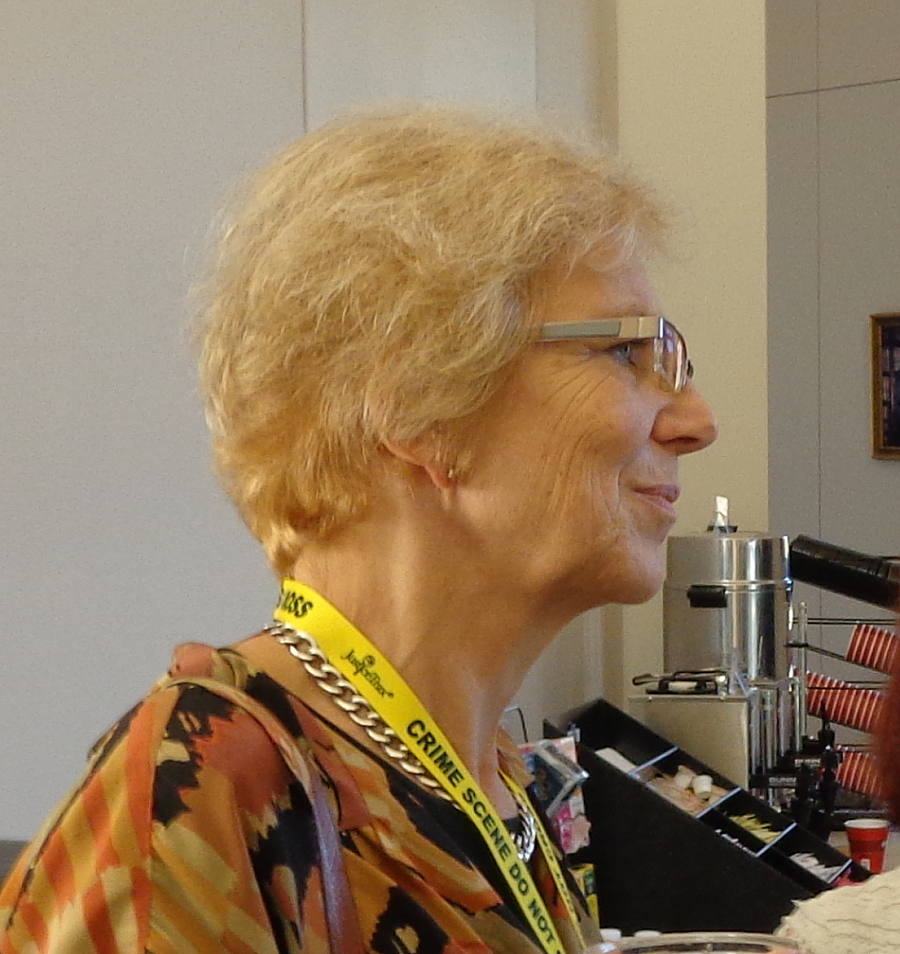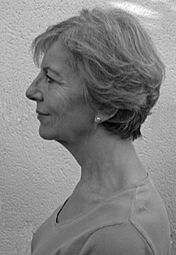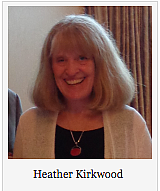Shaken baby shake-up: British High Court reinstates Dr. Waney Squier, criticizing the work of the tribunal that suspended her

Dr. Waney Squier
A British High Court judge has reinstated Dr. Waney Squier’s right to practice medicine, in a decision that dismissed as “unsustainable” a number of findings by a tribunal appointed by the General Medical Council (GMC) in 2015 to investigate her testimony in a series of shaken baby cases. A well respected pediatric and perinatal neuropathologist, Dr. Squier has questioned shaken baby theory in the medical journals and has testified to her opinions in court. After the tribunal’s findings were issued last spring, the GMC removed her from the medical registry.
Justice Sir John Edward Mitting explicitly rebutted the tribunal’s conclusions that Dr. Squier had acted dishonestly, noting at one point that “her views were genuinely held.”
Despite his harsh criticism of the tribunal’s report, Justice Mitting upheld their finding that Dr. Squier had practiced outside her field of expertise. He has prohibited her from giving expert testimony in British courtrooms for three years.

Justice Mittering, who heard a week of testimony on Dr. Squier’s appeal last month, had clearly studied the transcripts from a series of hearings held by the tribunal, because he identified a number of factual errors in their report—such as their finding that Dr. Squier had proposed choking in a case with no evidence to support that conclusion, even though a 7-year-old witness had told an investigator the baby “was trying to vomit and was choking” and the clinical notes included repeated references to “gastro-oesophageal reflux disorder,” a condition consistent with choking.
I was relieved to see that the judge had also read much of the medical literature, and so recognized some of the tribunal’s misunderstandings and mischaracterizations of her citations. The tribunal had found, for example, that Dr. Squier had “completely misinterpreted” the Duhaime 1987 paper and had misrepresented both it and the Cory 2003 follow-up under oath. Comparing her testimony with the published papers, however, Justice Mitting noted the tribunal’s error:
This was a good example of her giving evidence outside her expertise, but, properly stated, both reports were not inconsistent with, and were to an extent supportive of, her hypothesis that a fall from a low height could cause fatal head injuries in small babies.
The institutional insistence that Dr. Squier gave evidence outside her expertise continues to strike me as ironic. In a tortured qualification to his endorsement of that finding, Justice Mitting recognized that medical specialists evaluating the triad would necessarily be expressing opinions outside their own disciplines, but he still seemed to agree with the tribunal that Dr. Squier had crossed a line:
The qualification is that, when the triad fell to be considered, any specialist, with the possible exception of a forensic pathologist, who supported or doubted the triad as indicative of NAHI [non-accidental head injury], would be bound to be expressing an opinion outside his specialism. There can be no proper criticism of a neuropathologist, neuroradiologist or ophthalmologist/ophthalmic pathologist for explaining why he supports or doubts the majority view and in doing so, expresses a view about symptoms or pathological findings outside his own discipline. It is neither improper nor professional misconduct for an expert in one specialism to do so. The boundary line between a proper explanation of support or doubt and trespassing impermissibly outside the expertise of the witness is imprecise and difficult to identify in any particular case. It would have been better if the [tribunal] had acknowledged that difficulty; but, with that qualification, there is and can be no justified criticism of its conclusions about the limits of Dr. Squier’s expertise.
I don’t understand how either the tribunal or Justice Mitting can object to Dr. Squier’s expressing her opinions about short falls but still accept the opinions of physicians who diagnose shaking injury, a proposition that implies a level of biomechanical understanding not included in anyone’s medical education.
Stepping through the dozens of charges and sub-charges, Justice Mitting determined that Dr. Squier had correctly cited not only Duhaime and Cory but also Arbogast 2005, Rooks 2008, Oehmichen 2008, and others, noting in one case that the tribunal had relied on the testimony of neuropathologist Prof. Colin Smith, who himself had misrepresented the paper in question:
Professor Smith stated, in evidence accepted by the [tribunal], that the authors could discriminate between traumatic and ischaemic causes of axonal injury. In fact they only did so in 2 out of 18 cases. Unfortunately, this proposition was not put to Professor Smith in cross-examination. As a non-expert, I set out my understanding of the passage on which he relied with some diffidence, but it does, in the end, seem to me to be reasonably clear. It supports rather than undermines Dr. Squier’s opinion. The [tribunal] was wrong to find this sub-charge proved.
Still, Justice Mitting agreed with the tribunal that Dr. Squier had “cherry-picked” from her sources and had at various points misrepresented Arbogast and others, and he seems to have accepted some common misunderstandings about shaking injuries. The tribunal had found, for example, that Dr. Squier was untruthful and “evasive” in her testimony in front of them, citing four specific instances in which they found her statements unbelievable. In one of their examples, she gave inconsistent answers to the question of when she had suggested a child had experienced a “lucid interval”—in her written report or in her oral testimony at either the civil or the criminal trial. Evaluating that exchange, Justice Mitting wrote:
Her explanation for the difference was that she was confused. Her answers read like an attempt to justify an opinion about lucid intervals which she realised was difficult to support. The [tribunal]’s finding that her explanation of confusion was “incredible” was justified if, by it, they meant that she was struggling to justify an unsustainable opinion. To that extent, her answers were evasive.
Myself, I endorse Dr. Squier’s opinions about the lucid interval, which I think are well supported by the published literature—please see, for example, the letter to the American Journal of Forensic Medicine and Pathology from Dr. Robert W. Huntington III on the home page of my site, On Shaken Baby.
After last week’s decision was released, including the restriction on Dr. Squier’s giving court testimony, intensivist and shaken baby critic Dr. Steven Gabaeff observed that even with the reinstatement, proponents of shaken baby theory have achieved their goal of “suppressing defense testimony.” If no one who doubts shaken baby theory is allowed to testify, then accused parents have no chance to argue their innocence at trial.

“Shortly into the talk, I realized that the ‘national coordinated approach’ referenced in the title of the talk was essentially a description of the joint efforts of New Scotland Yard, prosecution counsel, and prosecution medical experts to prevent Dr. Squier and Dr. [Marta] Cohen from testifying.”
For more about professional harassment of Dr. Squier, please see “Back Door Tactics Show Through” and “When Pie in the Sky Turns Out to Be Dawning Knowledge.”
On October 7 of this year, just before the appeal hearings opened, the BMJpublished a letter of support for Dr. Squier from more than 250 physicians, attorneys, and others protesting that the GMC’s sanction was depriving patients of her skills and expertise—if you have not yet done so, you can go to the letter site and click the thumbs-up button to add your vote of support for Dr. Squier.
Last week’s decision reinstating Dr. Squier brought her story back into the headlines, including treatments by the BBC, the Daily Mail, and The Justice Gap, an on-line magazine about justice and the law aimed at the public.
The GMC’s decision last spring to remove Dr. Squier from the medical registry triggered immediate outrage from her defenders, followed by continuing coverage within the U.K. justice community, which recognized the chilling effect of the medical council’s actions on any physicians who dare to disagree with mainstream thinking.

In a forensic analysis of the judgment, Michael Birnbaum QC, who gave evidence on behalf of the doctor, pulls few punches accusing the tribunal’s reasoning of being ‘largely formulaic and frequently illogical’ as well as being littered with ‘howlers’. ‘In my 43 years of practice at the Bar I have rarely read a judgment of an English Court or Tribunal so deeply flawed and unfair as this,’ he begins.
‘Given this bizarre combination of the apparently one-sided and the obviously inept, I cannot make up my mind whether the tribunal was actually biased in the sense of being actively prejudiced against Dr Squier or whether it was just not up to its task,’ he writes. ‘Whatever view one takes on its impartiality, the tribunal’s presentation of the evidence is so inadequate and its conclusion so poorly reasoned that its determination lacks all credibility.’
I am gratified that Justice Witting also recognized some of the many objective errors in the tribunal’s report, and I am pleased that Dr. Squier is allowed to practice again. I wish that someone at the GMC would also read the report carefully and realize that the organization has imposed professional sanctions based on a series of misinterpretations and fundamentally flawed conclusions.
In fact, I wish someone at the GMC would also read the shaken baby literature carefully, because they would be forced the reach the same conclusions as Dr. Squier and the team of Swedish scientists and physicians who last month published their review of the shaken baby literature, that is, that shaken baby theory has never been proven. For my personal analysis of the medical literature, please see Shaken Baby Syndrome: Medico-Legal Miscommunication.
Like the tribunal’s report, the published literature in support of shaken baby theory does not hold up under careful scrutiny.
If you are not familiar with the debate surrounding shaken baby theory, please see "My Front-Row Seat at a Bitter Professional Debate."
